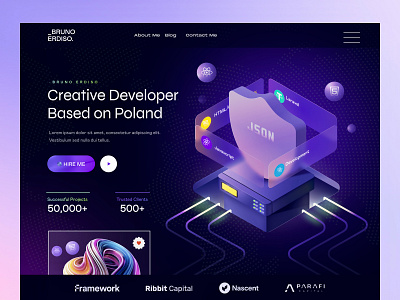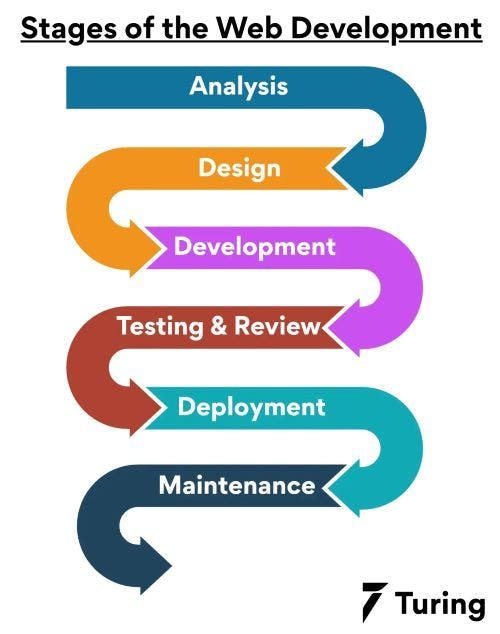The evolution of web design in creating innovative digital experiences
Checking Out the Different Kinds Of Website Design and Their Distinct Advantages
The landscape of Web style incorporates a range of styles, each offering unique benefits that cater to various customer demands. Minimalist and flat layouts stress clearness, while responsive and material layouts boost versatility throughout gadgets. Typography-driven and illustrative approaches intend to improve involvement and emotional vibration. Comprehending these varied kinds can substantially influence individual experience and brand perception. What lies under the surface of these design selections?
Minimal Website Design

Minimal website design typically integrates a minimal color scheme and simple typography, which not just enhances aesthetic appeals however additionally strengthens brand name identification. The decreased intricacy can cause much faster packing times, further enhancing customer contentment. Furthermore, by minimizing visual mess, users can engage with material much more successfully, causing boosted comprehension and retention. Overall, minimal website design fosters a smooth customer experience, making it a popular option for brand names aiming to communicate clarity and expertise in their on-line visibility.
Responsive Web Layout
Responsive website design has actually come to be essential in today's digital landscape, ensuring mobile compatibility for customers throughout various devices. This method substantially improves customer experience by supplying seamless navigation and ease of access, despite display dimension. As even more people access the Web on smart devices and tablet computers, the significance of responsive style remains to expand.

Mobile Compatibility Significance
As smart phone use remains to rise, ensuring web sites work with different display dimensions has become important for efficient interaction and involvement. Mobile compatibility, often attained with receptive Web style, enables web sites to adjust flawlessly to mobile phones, tablets, and various other devices. This adaptability not just reaches a broader audience however likewise enhances brand integrity. A website that works well on smart phones shows professionalism and focus to customer needs. Furthermore, search engines prioritize mobile-friendly websites in their positions, making compatibility an important element for online visibility. By purchasing mobile compatibility, organizations can improve their electronic visibility and cater to the expanding number of users who access information on the move. Focusing on mobile-responsive layout is critical in today's electronic landscape.
Improved Individual Experience

Apartment Style
Level layout is a minimal method to website design that stresses simplicity and clearness. By getting rid of three-dimensional aspects such as structures, shadows, and gradients, level style develops a visually enticing customer interface that focuses on web content and functionality. This style promotes an instinctive navigating experience, as customers can quickly identify crucial functions and activities without interruption.
One of the primary benefits of level layout is its responsiveness across various tools and screen dimensions. Its uncomplicated designs and clean lines adapt flawlessly, ensuring a consistent experience for individuals on mobile, tablet, or desktop computer platforms. Additionally, level style usually incorporates vibrant shades and typography, improving visual impact and brand acknowledgment.
Moreover, the simplicity fundamental in level style results in faster loading times, which adds positively to individual fulfillment - website development. Generally, flat style continues to be a prominent option for modern Web growth, aligning with contemporary visual preferences while supplying superb functionality
Material Layout
Material Layout represents a style language developed by Google that concentrates on creating a intuitive and natural user experience throughout digital systems. This approach stresses the use of grid-based designs, receptive animations, and depth effects such as lights and shadows, which assist to produce a feeling of pecking order and spatial partnerships. By simulating the physical globe, Material Design enables customers to interact with electronic interfaces in a much more natural and interesting manner.
Among the vital advantages of Material Style is its versatility throughout numerous devices and display sizes, ensuring a constant experience for individuals. Furthermore, it advertises a clear visual language that boosts use, making it simpler for users to navigate complex applications. The unification of vibrant colors and vibrant typography likewise plays a necessary duty in attracting focus to crucial elements, consequently boosting total user involvement - website design. As A Result, Product Design has become a preferred selection amongst programmers seeking to produce useful and aesthetically enticing websites
Typography-Driven Design
Typography-Driven Layout concentrates on the critical use kind to improve the aesthetic and functional aspects of an internet site. This layout technique focuses on typefaces, font dimensions, spacing, and hierarchy to develop aesthetic interest and overview customer experience. By meticulously choosing typography, designers can convey brand name identity and stimulate feelings, making the web content a lot more easily accessible and interesting.
Efficient typography improves readability and usability, ensuring that individuals can easily navigate the site and absorb information. The best mix of type informative post can also develop a clear aesthetic power structure, enabling customers to swiftly recognize essential messages and calls to action.
Moreover, a typography-driven hop over to here strategy can be adjusted to various gadgets, ensuring uniformity throughout platforms. This flexibility is essential in today's multi-device landscape, where individual experience is paramount. Ultimately, Typography-Driven Layout offers not just as an artistic option but likewise as a useful aspect that substantially impacts a web site's efficiency.
Illustrative Website Design
Illustratory Web design employs visual storytelling methods that can greatly enhance individual involvement. By incorporating one-of-a-kind illustrations, sites can produce a remarkable brand name identification that resonates with their audience. This method not just astounds visitors but additionally connects messages in an aesthetically engaging manner.
Visual Storytelling Methods
A multitude of Web designers employ visual storytelling methods to produce interesting and immersive customer experiences. This approach combines typography, images, and design to tell a tale that resonates with customers on a psychological level. By incorporating engaging visuals, developers can efficiently convey messages and evoke sensations, guiding site visitors via a brand's trip. Infographics, computer animations, and interactive aspects offer to enhance narratives, making complicated info a lot more unforgettable and available. Additionally, visual storytelling can establish a natural brand name identity, as regular imagery and motifs strengthen core values and messages. Inevitably, this strategy not only mesmerizes customers but also cultivates a deeper connection with the web content, encouraging exploration and retention. Through skilled application, visual storytelling changes conventional Web experiences into vibrant and purposeful interactions.
Enhancing User Interaction
Effective Web style significantly improves user engagement by leveraging illustratory elements that attract focus and foster communication. Pictures this contact form can simplify intricate principles, making them more unforgettable and approachable for users. They damage the dullness of text-heavy web pages, creating aesthetic breaks that welcome exploration. Furthermore, unique images can evoke emotions, urging customers to get in touch with the content on a deeper level. Interactive components, such as animations or hover results, can likewise enhance interaction by welcoming individuals to participate proactively as opposed to passively eating details. This approach not only maintains site visitors on the site longer however likewise increases the probability of return check outs. Inevitably, efficient illustratory website design changes the user experience, making it extra satisfying and impactful.
Branding Via Illustration
Aesthetic aspects play a considerable role fit a brand name's identity, and illustrations are an effective tool hereof. Illustrative Web style permits brand names to convey their one-of-a-kind character and worths via custom art work. This method cultivates a deeper psychological link with the target market, improving memorability and involvement. By integrating illustrations, brands can differentiate themselves in a jampacked marketplace, developing a distinct aesthetic narrative that resonates with their target market. Additionally, pictures can simplify complex principles and make web content much more available, successfully interacting messages in an interesting manner. In general, branding through image not just improves the user experience yet additionally reinforces brand name recognition, making it a beneficial technique for services intending to develop a strong on the internet presence.
Frequently Asked Questions
How Do I Pick the Right Website Design Type for My Service?
To choose the right website design type for an organization, one ought to analyze goals, target market, and industry requirements. Assessing individual experience and capability will assist the option process for suitable involvement and effectiveness.
What Equipment Are Finest for Producing Various Website Design Designs?
Popular devices for producing diverse website design styles include Adobe XD, Figma, Sketch, and WordPress. Each deals special features customized to different design demands, making it possible for designers to build useful and visually enticing web sites successfully.
Just How Much Does Specialist Website Design Generally Price?
Specialist Web style usually costs between $2,000 and $10,000, relying on complexity, functions, and designer proficiency. Customized options and recurring maintenance might boost expenditures, while themes can provide even more affordable choices for simpler jobs.
Can I Incorporate Multiple Web Layout Types Effectively?
Yes, combining multiple website design kinds can be efficient. By integrating elements from numerous styles, developers can produce one-of-a-kind, appealing individual experiences that provide to varied target markets while boosting capability and visual charm.
Just How Do Design Patterns Effect Individual Experience and Interaction?
Layout fads substantially influence customer experience and engagement by boosting visual charm, improving navigating, and promoting emotional connections - website design. Staying upgraded with trends allows designers to develop intuitive user interfaces that resonate with customers and motivate long term interactions
Level and minimalist styles emphasize clearness, while receptive and material layouts enhance versatility across tools. It may appear counterintuitive, minimalist Web style emphasizes simplicity to boost individual experience. Receptive Web design plays a crucial role in boosting individual experience by ensuring that a website adapts effortlessly to various screen sizes and tools. Level style is a minimalist method to Web design that highlights simpleness and quality. Material Style represents a layout language developed by Google that focuses on developing a user-friendly and natural individual experience throughout electronic systems.